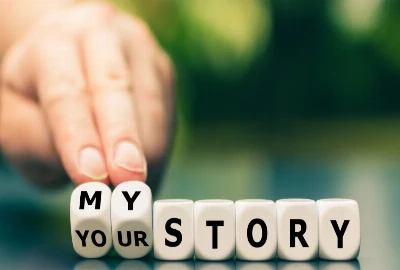Representation in Animation: Diversity in Voice Acting and Characters

Representation in animation isn’t just about entertainment—it’s about identity, belonging, and visibility. Animation reaches millions, from young children forming their first impressions of the world to adults who find comfort in nostalgic or innovative stories. When characters on screen reflect a wide spectrum of backgrounds, cultures, and voices, they send a powerful message: everyone deserves to be seen. Conversely, when certain groups are excluded or misrepresented, it reinforces harmful stereotypes and invisibility.
For decades, mainstream animation leaned heavily toward Eurocentric narratives, with white voice actors dominating roles and characters of color either absent or reduced to sidekicks. Today, however, the landscape is shifting. Social movements, cultural awareness, and global streaming platforms are challenging studios to do better. Audiences demand authenticity, not tokenism, and the industry is responding with more inclusive storytelling.
Why It Matters to Audiences
Studies show that children who see themselves represented in media develop higher self-esteem and empathy. Adults, too, resonate more with stories that reflect their realities.
The Larger Cultural Impact
Representation in animation shapes how society views race, gender, and diversity. It’s not just entertainment—it’s cultural storytelling at scale.
The History of Representation in Animation

Animation has a complex history with representation. In its early days, many cartoons perpetuated harmful stereotypes, particularly of Black, Asian, and Indigenous people. Caricatures exaggerated features, voices were distorted, and cultural traditions were mocked. These images left lasting scars, normalizing prejudice for generations of viewers.
Early Missteps
Classic cartoons like Looney Tunes and Tom and Jerry—though beloved—often included episodes that portrayed minorities through a deeply racist lens. Characters were flattened into jokes, rather than developed as human-like beings.
Voice Acting Inequality
Even when characters of color were introduced, they were frequently voiced by white actors. This was seen in The Simpsons with Apu, and in multiple Disney classics where accents or dialects were exaggerated for comedic effect.
Shifts Over Time
By the late 20th century, audiences began pushing back. Animated shows like Avatar: The Last Airbender gained praise for respectfully depicting Asian-inspired cultures, even if the voice cast was not fully representative. This laid groundwork for today’s push toward authenticity.
The Role of Voice Acting in Representation

Voice acting carries weight. A voice defines how a character feels, how believable they are, and whether their identity feels authentic. Miscasting can break immersion, while authentic casting deepens emotional resonance.
Authentic Casting Today
In recent years, we’ve seen white actors step down from voicing characters of color. Jenny Slate left Big Mouth and Kristen Bell stepped away from Central Park, acknowledging that Black characters should be voiced by Black actors.
Elevating New Voices
This shift has created opportunities for underrepresented voice actors. Performers like Shameik Moore (Spider-Man: Into the Spider-Verse) and Auliʻi Cravalho (Moana) proved that authentic casting brings cultural nuance and credibility.
Industry Accountability
Studios are increasingly aware that authenticity is no longer optional—it’s expected. This not only corrects past mistakes but helps foster diversity in a field long dominated by a small pool of actors.
Diversity in Animated Characters on Screen

The characters themselves are central to representation. Who we see on screen shapes what stories get told and who feels included.
From Tokenism to Main Characters
For years, characters of color were relegated to sidekick roles (Sebastian in The Little Mermaid) or written through stereotypes (Speedy Gonzales). Modern animation is reversing this, with leads like Miles Morales in Into the Spider-Verse and Mirabel in Encanto.
Expanding Identity
Representation now includes not just race but also disability, neurodiversity, and sexuality. Pixar’s Loop introduced an autistic protagonist, while The Owl House became Disney’s first animated show with a bisexual Latina lead.
Building Relatable Heroes
By giving diverse characters complex stories—facing challenges, growing, and triumphing—animation helps audiences connect emotionally across cultural lines.
Gender Representation in Animation

Gender representation has seen a major transformation, particularly in the last decade.
Breaking Out of Gender Roles
Female characters were once confined to “princess needing rescue” or “love interest” tropes. Today, they lead stories as warriors, scientists, and multidimensional heroes. Elsa (Frozen), She-Ra, and Raya are prime examples.
LGBTQ+ Visibility
Shows like Steven Universe broke ground with queer representation, showcasing same-sex relationships and non-binary identities in positive ways. The Owl House continued this trend with a bisexual lead and queer romance central to the narrative.
Impact on Viewers
When young audiences see diverse gender roles, they grow up understanding that leadership, strength, and compassion are not limited by gender.
Cultural Accuracy and Storytelling in Animation

Beyond character design, cultural authenticity is key to respectful representation.
Research-Driven Narratives
Disney’s Moana worked with Polynesian cultural consultants, ensuring accuracy in music, mythology, and design. This collaboration led to critical and cultural acclaim.
Celebrating, Not Stereotyping
Pixar’s Coco didn’t just show Mexican culture—it celebrated Día de los Muertos with reverence, turning it into the story’s emotional core.
Avoiding Surface-Level Inclusion
True representation means avoiding token characters and instead weaving cultural depth into the narrative itself.
The Impact of Streaming on Diverse Representation

Streaming platforms have widened the playing field for diverse stories.
Global Reach
Netflix’s Squid Game and Trese showed how non-Western animated stories could thrive internationally.
Independent Voices
Platforms like YouTube and Crunchyroll allow independent creators from diverse backgrounds to reach audiences without traditional gatekeepers.
Audience Empowerment
Streaming analytics highlight audience demand for diversity, giving platforms incentive to greenlight inclusive projects.
The Business Case for Representation in Animation

Diversity isn’t just socially progressive—it’s profitable.
Box Office Success Stories
Coco grossed over $800 million worldwide. Spider-Man: Into the Spider-Verse won an Oscar and became a box office hit, proving audiences crave fresh, diverse perspectives.
Long-Term Loyalty
Audiences connect deeply with authentic representation, fostering generational loyalty to studios that “get it right.”
Expanding Global Markets
Representation allows studios to break into international markets, appealing to audiences who finally see themselves reflected.
Challenges Facing the Industry

Despite progress, roadblocks remain.
Tokenism
Some studios still create diverse characters but fail to give them depth or meaningful arcs.
Backlash
Inclusive projects often face backlash from vocal groups resistant to change.
Systemic Change Needed
Lasting transformation requires diversity not only on screen but also in writing rooms, director’s chairs, and executive roles.
The Future of Voice Acting and Representation

The future holds promise, but also challenges.
Opening Doors for New Talent
With greater awareness, casting directors are now seeking underrepresented voice talent more actively.
Collaboration Across Borders
Studios are beginning to cast actors from the cultures they depict, especially in international co-productions.
The Role of Technology
AI voice tech raises ethical questions: will studios use synthetic voices, or invest in real actors who bring cultural authenticity?
Case Studies: Animated Successes in Representation

Examining recent works shows how diversity transforms storytelling.
Spider-Man: Into the Spider-Verse
Miles Morales’ Afro-Latino identity wasn’t just a detail—it was central to his character and story, resonating globally.
Coco
Praised for its cultural depth, Coco became a cultural milestone for Mexican representation in mainstream animation.
Steven Universe
By making LGBTQ+ identities part of the narrative, it showed that animation can lead the way in inclusive storytelling.




